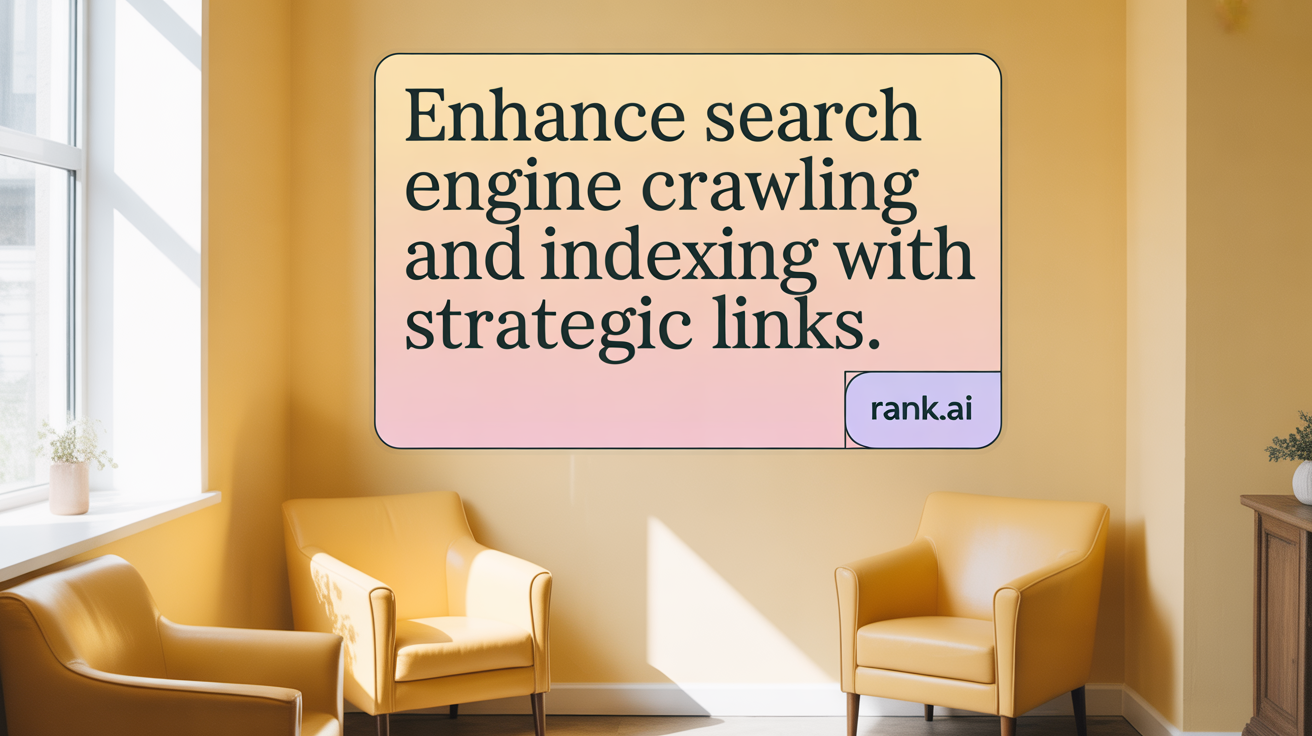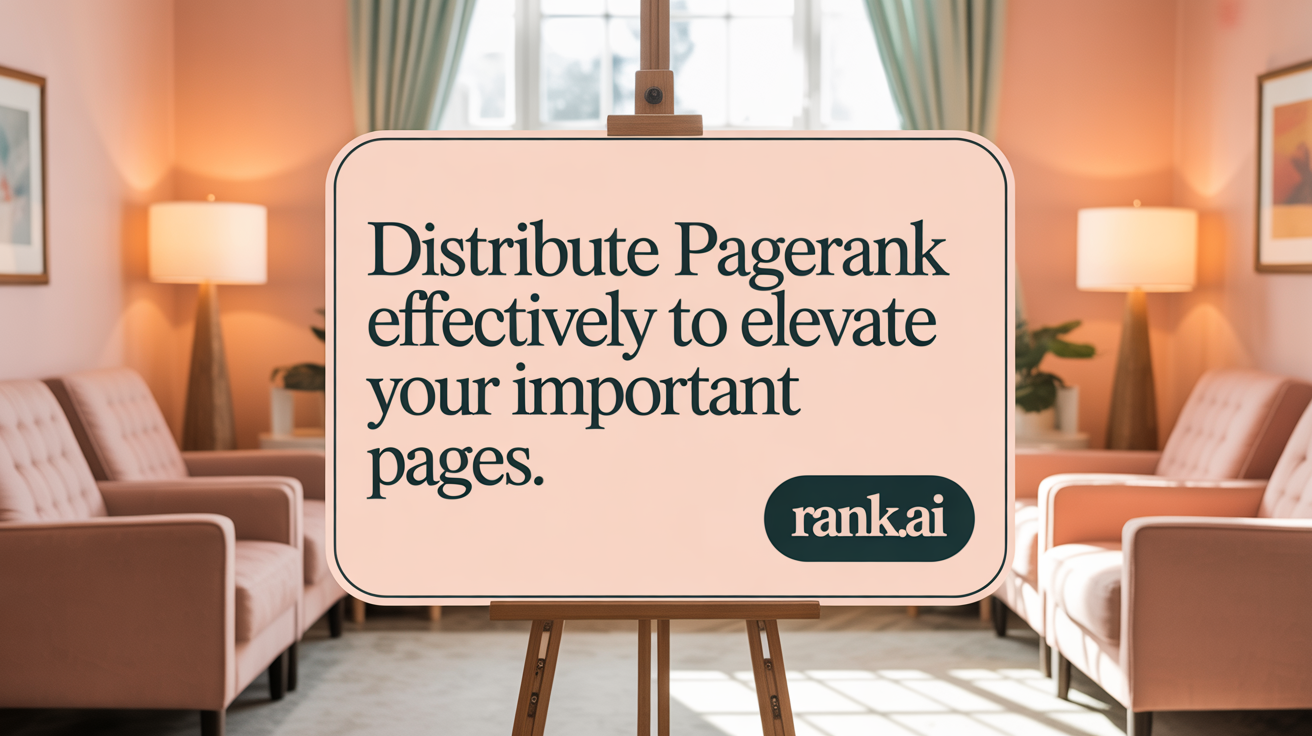Understanding the Role of Internal Linking in Website Authority
Internal linking is a fundamental yet often underappreciated aspect of search engine optimization (SEO) that directly influences a website’s authority, user experience, and search rankings. By connecting pages within the same domain, internal links help search engines crawl, index, and comprehend the structure and topical relevance of your website. This article explores how internal linking strengthens website authority, shares strategic best practices, and reveals its critical impact on SEO performance and user engagement.
The Primary Purpose of Internal Linking in SEO
What is the primary purpose of internal linking in on-page SEO?
Internal links are hyperlinks that point to other pages within the same website. Their main function is to help search engines navigate, discover, and understand the structure of a website. By creating a network of well-placed internal links, search engines can efficiently crawl and index all relevant pages, leading to better visibility in search results.
Beyond aiding search engines, internal links improve user navigation. They guide visitors to related content, making it easier to find information and stay longer on the site. This enhanced user experience can increase engagement, reduce bounce rates, and encourage conversions.
Strategically implemented internal links also pass authority, or PageRank, from high-authority pages to those that need a ranking boost. Using descriptive, keyword-rich anchor text signals the topic relevance of linked pages, further strengthening SEO efforts. Additionally, maintaining a clear site hierarchy through internal links—like pillar pages and topic clusters—helps define the importance of various pages.
Regular audits and updates of internal links are essential to ensure a healthy, crawlable, and well-structured website. Proper internal linking maximizes the flow of link equity throughout the site, supporting overall SEO performance and ensuring that valuable content ranks higher in search engine results.
How Internal Linking Enhances SEO and Website Authority
How do internal links benefit SEO and website authority?
Internal links improve your website's visibility on search engines, increase user engagement, distribute page authority, drive traffic to older content, introduce users to new content, and enhance overall user experience.
Strategic internal linking is crucial for making your site more discoverable and crawlable for search engines like Google. When pages are well-linked, search engines find it easier to index content, understand site structure, and recognize the importance of key pages.
By connecting related content through contextual links and using descriptive anchor text, internal links help search engines comprehend topics and relevance, leading to better rankings. They pass authority, or PageRank, from high-authority pages to other important pages, boosting overall site strength.
Internal links also keep visitors engaged by guiding them to relevant, related content, which reduces bounce rates and increases the time spent on your website. This improved user experience can indirectly benefit SEO, as search engines favor sites that offer valuable, accessible content.
Furthermore, linking to older or less-visited pages helps revive their visibility and traffic. When these pages are integrated into your site’s internal link structure, they are more likely to be crawled, indexed, and ranked.
Creating a clear hierarchy with pillar pages and content clusters through internal links reinforces your site’s thematic authority. This organization helps search engines see your website as a comprehensive resource, enhancing trust and credibility.
Regularly auditing and optimizing internal links ensures that broken or orphaned pages are fixed or connected properly. This maintenance preserves your site's link equity flow and keeps the user journey smooth.
In summary, a well-executed internal linking strategy strengthens your website’s SEO by boosting visibility, distributing authority, encouraging exploration, and supporting efficient crawling and indexing.
Improving Site Navigation and User Experience Through Internal Linking

How can internal linking improve site navigation and user experience?
Internal linking plays a vital role in enhancing how users navigate a website. By creating logical pathways that connect related content, internal links help visitors move smoothly from one page to another without confusion. For example, linking to related articles, products, or categories guides users to relevant information, keeping them engaged longer.
This strategic linking also reduces frustration by providing clear routes to fulfill their informational needs, thus encouraging longer sessions. When users find what they are looking for easily, they are less likely to leave the site prematurely, which lowers bounce rates.
Moreover, internal links act as guides for search engines, helping them understand the site’s structure and the relationships between content. This improves the site’s overall crawlability, ensuring all pages are indexed efficiently and displayed favorably in search results.
In summary, well-planned internal links create an intuitive, organized, and engaging website experience. They support users in fulfilling their intent and make the site easier to navigate, ultimately boosting user satisfaction and site effectiveness.
Best Practices and Strategies for Effective Internal Linking

What strategies and best practices should be followed for effective internal linking?
Developing an internal linking structure that boosts SEO and user experience requires careful planning. Start by creating a logical site hierarchy with clear relationships between main topics and subtopics. Pillar pages serve as comprehensive hubs for core subjects, supported by related content clusters linked internally to reinforce authority and relevance.
Using descriptive and varied anchor text is essential. Incorporate relevant keywords naturally, providing clarity about the linked page’s content to Google and users. This approach not only improves SEO but also enhances user understanding. Avoid generic phrases like "click here"; instead, be specific about the destination.
Link strategically from high-authority and high-traffic pages. These pages can pass valuable link equity to other important pages, helping to improve their rankings. Placing internal links at strategic points, such as early in the content or near call-to-actions, increases visibility and engagement, while also supporting better crawlability.
Regular audits help maintain an effective internal linking structure. Use tools like Google Search Console, Screaming Frog, or SEMrush to identify broken links, orphaned pages, or outdated links that can harm user experience and SEO. Fix or update these links to ensure smooth navigation.
It's also crucial to balance internal and external links. While internal links distribute page authority, linking to reputable external sources can enhance your site’s credibility and relevance.
Proper internal linking isn’t a one-time effort. Continually update your strategy based on content changes, SEO rankings, and evolving site goals. This might include adding new links to recent content or removing unnecessary ones.
In summary, effective internal linking involves creating a well-structured site with relevant, keyword-rich anchor texts, prioritizing important pages, conducting regular audits, and strategically placing links within your content. This integrated approach can significantly improve search engine visibility, site authority, and user engagement.
Building Topical Authority Through Internal Linking
How does internal linking contribute to building topical authority and strengthening a website?
Internal linking is a fundamental strategy for establishing and enhancing a website’s topical authority. By creating a well-organized network of links among related content, sites can clearly demonstrate their depth of coverage on specific subjects. This interconnected structure helps search engines understand the core themes and topics the website specializes in.
One effective method is developing content clusters around flagship or pillar pages. These pillar pages serve as comprehensive authorities on a main topic, while supporting articles or sub-pages delve into more specific aspects. Linking these supporting pages back to the pillar reinforces their relationship, signaling to search engines that the site offers expert coverage of that subject.
This linking approach not only aids in topical relevance but also distributes PageRank and link equity throughout the site. Important pages gain authority by passing value through internal links, which elevates their visibility in search results.
Furthermore, internal links improve site navigation, making it easier for visitors to find related information, increasing engagement, and reducing bounce rates. This enhanced user experience aligns with search engine preferences, ultimately influencing rankings positively.
Strategic internal linking thus acts as a backbone for building authority, supporting indexation of essential pages, and positioning the website as a trustworthy resource. In summary, a thoughtful internal linking structure enhances authority, clarifies site hierarchy, and bolsters search rankings through topical relevance.
The Role of Anchor Text in Internal Linking

Importance of Descriptive and Relevant Anchor Text
Anchor text serves as the label for the hyperlink, guiding both users and search engines about the linked content. Descriptive and relevant anchor text clearly communicates the topic of the page being linked to, which enhances user experience and helps search engines understand the relationship between pages.
Using Keyword-Rich Anchor Text Without Spamming
Incorporating keywords into anchor text can boost SEO, but overdoing it may appear spammy. A balanced approach involves naturally integrating keywords that accurately describe the linked page, avoiding repetitive or manipulative tactics that could harm rankings.
How Anchor Text Informs Search Engines About Linked Content
Search engines analyze anchor text to determine the relevance and context of the linked page. Proper anchor text signals the content focus of the destination page, aiding in its ranking for targeted keywords and relevant topics.
Diversifying Anchor Text to Avoid Penalties
Using a variety of anchor texts prevents over-optimization, which search engines may penalize. Mixing branded, generic, and descriptive phrases maintains a natural linking profile and enhances SEO stability.
Examples of Effective Anchor Text Practices
Effective anchor text includes specific phrases like "internal linking strategies" or "SEO best practices" instead of vague terms like "click here" or "read more." It should be concise, relevant, and incorporate target keywords when appropriate.
Case Study Insights on Varied Anchor Texts Improving Traffic
A case study from ZYPPY demonstrated that sites utilizing a diverse array of anchor texts saw increased search traffic. This variability helped pages rank for multiple related keywords and improved overall site visibility.
Creating a strategic internal linking network using descriptive, keyword-optimized, and varied anchor texts ensures better understanding by search engines and a more engaging experience for users.
Maintaining a Healthy Internal Linking Structure
Performing regular audits to detect broken or orphaned links
Regularly reviewing your website’s internal links is essential for maintaining a healthy structure. Broken links can frustrate users and harm your SEO, while orphaned pages—those not linked internally—may remain undiscoverable by search engines.
Using automated tools for link analysis
Tools like Screaming Frog, Ahrefs, SEMrush, and Google Search Console can help identify issues such as broken links, redirect loops, or orphan pages. These tools simplify the process and provide comprehensive reports to optimize internal linking.
Fixing redirect loops and HTTPS vs HTTP issues
Redirect loops can trap users and crawlers, preventing page indexing. Ensuring proper redirects and avoiding circular references is crucial. Additionally, standardize URLs to use HTTPS, preventing issues where links from secure pages point to non-secure ones, which may cause ranking penalties.
Updating old content with fresh internal links
Revise older pages by adding relevant internal links to new content. This refreshes page relevance, boosts traffic, and redistributes link authority, especially for pages that may have lost visibility over time.
Balancing link quantity to avoid clutter and SEO dilution
While internal links help distribute authority and improve navigation, overloading pages with too many links can diminish their impact. Aim for a strategic number of links, typically 3-5 per page, and ensure each add value.
Ensuring important pages have proper link equity
Prioritize linking to your main pillar and high-value pages from authoritative pages on your site. This ensures they receive enough link equity, helping them rank better and signaling their importance to search engines.
Maintaining a robust internal linking structure through ongoing audits, proper tools, and thoughtful updates keeps your website optimized for both users and search engines, enhancing overall SEO performance.
Internal Linking's Impact on Crawlability and Indexation

How internal links assist search engine crawlers
Internal links serve as signposts for search engine crawlers, guiding them through a website’s structure. These links help crawlers discover new content, revisit important pages, and understand the relationships between different sections of a site.
Improving discovery of new and deep pages
When new pages are linked internally from established content, they become easier for search engines to find and index. Linking to deep pages—those buried several layers deep in a website hierarchy—ensures that critical content is not overlooked and can be quickly discovered.
Enhancing indexation rate and content visibility
A well-planned internal linking structure increases the frequency and efficiency of crawling. This results in higher chances of pages being indexed and appearing in search results. Internal links also improve content visibility by making important pages more accessible from multiple points within the site.
Preventing orphan pages through linking strategies
Orphan pages are those that are not linked to any other page, making them difficult for search engines to find. Incorporating internal links to and from these pages ensures they are part of the website’s crawl path, increasing their chances of being indexed and ranked.
Example of hierarchical linking improving crawl efficiency
For instance, a website with a clear hierarchy—homepage linking to category pages, which then link to individual articles—enables crawlers to follow a logical path. This internal structure allows for more systematic exploration, ensuring all relevant content is discovered and indexed efficiently.
The Connection Between Internal Linking and PageRank Distribution

How Internal Links Pass Link Equity from High-Authority Pages
Internal links are crucial for passing PageRank, or link authority, across a website. When high-authority pages link to other relevant pages within the site, they transfer part of their authority, boosting the linked pages' visibility in search rankings. This process helps distribute link equity evenly and elevates the overall site authority.
Using Pillar and Hub Pages to Funnel Authority
A strategic approach involves creating pillar pages that act as comprehensive resources for core topics. Hub pages or cluster pages link to various related sub-pages, channeling authority toward in-depth content. This structure enhances topical relevance and ensures that important content receives the necessary link juice to rank higher.
Impact on Page Rankings and Overall Site Authority
Effective internal linking influences individual page rankings as well as the entire website's authority. By prioritizing links from authoritative pages to target content, you improve their chances of ranking better. Over time, this strengthens your website's domain strength, making all pages more discoverable.
Importance of Dofollow Internal Links
Dofollow links are essential because they allow link equity to flow to linked pages. While nofollow links signal search engines to ignore passing authority, dofollow links support the strategic transfer of PageRank, directly impacting SEO performance.
Avoiding Link Dilution and Over-Linking
Too many internal links can cause dilution, where authority gets spread thin across numerous pages, weakening each one’s potential. It's important to use a balanced number of links, focusing on relevant and valuable connections rather than excessive linking, to maintain strong authority flow.
Strategic Placement of Internal Links
Positioning powerful internal links within content—such as in the main body or near calls-to-action—maximizes their effectiveness. Linking from high-traffic or high-authority pages to strategic target pages ensures a more efficient transfer of link equity, improving rankings and site strength.
Enhancing User Engagement and Conversion Through Internal Links
Guiding users to relevant products, services, and content
Strategic internal links help direct visitors to related pages that match their interests or needs. For example, linking from a blog post to detailed product pages or services can guide users seamlessly towards conversions. Using descriptive anchor text ensures visitors understand where they will land, increasing engagement.
Increasing time on site and reducing bounce rate
Effective internal linking encourages users to explore more pages, staying longer on your website. This not only improves user experience but also signals to search engines that your site provides valuable content. Placing links in relevant sections, such as within content or at the end of articles, captures attention and keeps visitors engaged.
Supporting educational content flow with sequenced links
For educational sites or blogs, sequencing internal links creates a logical path for learning. Linking related articles or tutorials in a series guides users through a comprehensive knowledge journey. This structured approach builds authority and trust while encouraging ongoing exploration.
Encouraging subscriptions and conversions via CTAs
Internal links embedded with calls-to-action (CTAs) can boost conversions. For example, linking to newsletter signup pages or special offers within relevant content prompts users to take desirable actions. Clear, enticing links placed strategically at high engagement points improve click-through rates.
Optimizing link placement for engagement and sales funnel
Placing internal links thoughtfully—such as within the first few paragraphs, at the end of content, or within sidebar elements—maximizes visibility. Linking high-intent pages like product categories or sign-up forms at strategic points ensures users are guided smoothly through the sales or subscription process.
By thoughtfully implementing internal links tailored to user behavior, websites can improve navigation, foster longer visits, and increase conversions, ultimately enhancing overall performance.
The Strategic Value of Internal Linking for Long-Term Website Authority
Internal linking is an indispensable component of SEO that strengthens website authority by improving crawlability, enhancing user experience, distributing link equity, and building topical relevance. Implementing a deliberate and well-maintained internal linking strategy supports search engines in understanding site structure and content relationships, which significantly impacts rankings and visibility. Additionally, internal links guide users through thoughtfully organized content pathways, increasing engagement and conversions. Regular audits and adherence to best practices ensure internal linking remains effective and sustainable as your website grows. By prioritizing internal linking, website owners can cultivate a robust, authoritative presence that drives sustained SEO performance and successful digital outcomes.
References
- Internal linking for SEO: Why and how? • Yoast
- Internal Links: Ultimate Guide + Strategies - Semrush
- How to Use Internal Linking to Boost Page Authority - Good2BSocial
- 7 Benefits of Internal Linking in SEO - seoClarity
- How to Improve the Internal Linking on a Website - Xamsor
- The Role of Internal Linking in SEO: Enhancing Site Authority
- How to Build a Strong Internal Linking Strategy to Boost SEO and ...
- How to Use Internal Links to Build Topical Authority - Zenbrief
- How Internal Linking Improves SEO and Website Authority



